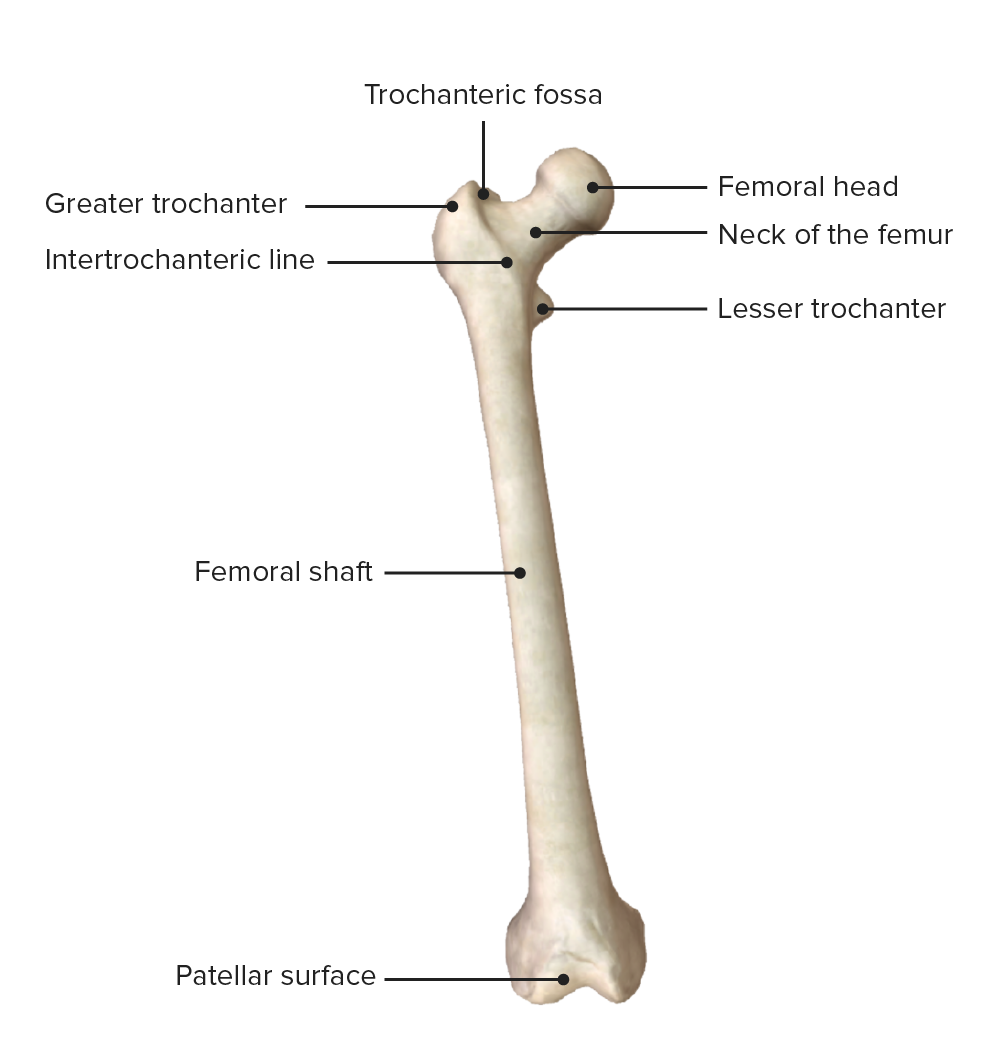Playlist
Show Playlist
Hide Playlist
Thigh – Overview of Arterial Supply to Lower Limb
-
Slides 08 LowerLimbAnatomy Pickering.pdf
-
Download Lecture Overview
00:00 So here we can see various dissections of the thigh region to show the branches of the femoral artery. We can just quickly highlight the femoral artery passing down here into the femoral triangle. We can see it passing now into the adductor canal, and we can see it leaving the adductor canal via the adductor hiatus. So the femoral artery enters the femoral triangle deep to the inguinal ligament. We can see this happening here. External iliac becomes the femoral deep to the inguinal ligament. Inguinal ligament is here, and we can see the femoral artery now running towards the apex of the femoral triangle. It exits at the apex to enter into the adductor canal. It then leaves the adductor canal via the adductor hiatus where it enters the popliteal fossa. And here, it becomes the popliteal artery. Within the femoral triangle, we can see that the femoral artery gives rise to this deep blood vessel here. This is known as the deep artery of the thigh or profunda femoris, and it also gives rise to medial and lateral circumflex arteries. So, medial and lateral circumflex arteries are coming away from the deep arch of the thigh. We can see the lateral circumflex artery is running around in this direction, and we can see the medial circumflex artery is running around in this direction. Within the femoral triangle, profunda femoris is given off this deep artery. And we can see this deep artery running down here. 01:37 It passes deep to adductor longus, and it supplies the thigh musculature posterior to the femur. Here, we can see adductor longus. Here, we can see adductor longus. And we can see here the deep artery of the thigh is going to pass deep to adductor longus. We can also see that the femoral artery gives rise to lateral and medial circumflex arteries, these course around the proximal aspect of the femur. So here we can see the medial circumflex artery, and this is passing deep to iliopsoas, which we can see here running down iliopsoas. 02:18 It passes deep to iliopsoas and pectineus. So here we have the medial circumflex artery, and here we have the lateral circumflex artery once again. And this crosses the joint capsule anterior to quadratus femoris. So when we look at the posterior view, anterior to quadratus femoris will be this lateral circumflex artery. As the artery passes deep through the thigh perforating arteries, so as the profunda femoris passes deep through the thigh, perforating arteries course around the femur to supply adductor magnus, and also, the posterior compartment. 03:02 Here, we can see the deep artery of the thigh running down here giving rise to perforating arteries. We can see one here, we can see another one here, and we can see another one here. And these are passing through adductor magnus to go and supply the posterior compartment, perforating because they perforate through adductor magnus. Now let’s turn to the obturator artery. This arises from the internal iliac within the pelvis, and it enters the medial thigh via the obturator canal, a defect in obturator foramen, a defect in obturator membrane. 03:44 Now let’s turn to the obturator artery, and this arises from the internal iliac within the pelvis. It enters the medial thigh via the obturator canal, and this is an aperture in the obturator membrane that is lining the obturator foramen. There’s some common variation in the origin of the obturator artery. In fact, you can have branches coming from the external iliac or the inferior epigastric artery. And here it would be known as an aberrant obturator artery. But we can see the obturator artery is going to enter through the obturator canal, a defect in obturator membrane, and we can see it now alongside obturator nerve passing into this medial compartment. We can just see it here. Within the medial compartment, it’s going to divide into anterior and posterior branches, and these pass either side of adductor brevis. So here’s adductor longus. Deep to adductor longus, we’d find adductor brevis. 04:44 And then anterior and posterior to that, we have the anterior and posterior branches of the obturator artery. So here if we have a look, we can see adductor brevis in more detail. 04:56 Here is adductor brevis. Now, the adductor longus has been removed. And running along the anterior surface of adductor brevis, we’d find the anterior part of obturator artery. 05:06 And running underneath it to supply the deeper musculature, we’d find the posterior division.
About the Lecture
The lecture Thigh – Overview of Arterial Supply to Lower Limb by James Pickering, PhD is from the course Lower Limb Anatomy [Archive].
Included Quiz Questions
When the femoral artery becomes the popliteal artery, which structure does it exit?
- Adductor hiatus
- Popliteal fossa
- Femoral triangle
- Medial compartment of the thigh
- Lateral compartment of the thigh
From which major artery do the medial and lateral circumflex arteries arise?
- Femoral
- Popliteal
- Internal iliac
- Gluteal
- Obturator
What is the source of the aberrant obturator artery?
- Inferior epigastric artery
- Popliteal artery
- Internal iliac artery
- Gluteal artery
- Femoral artery
What is the anatomic relationship of the anterior obturator artery to the adductor brevis?
- Anterior
- Horizontal
- Deep
- Posterior
- Lateral
Customer reviews
5,0 of 5 stars
| 5 Stars |
|
5 |
| 4 Stars |
|
0 |
| 3 Stars |
|
0 |
| 2 Stars |
|
0 |
| 1 Star |
|
0 |




